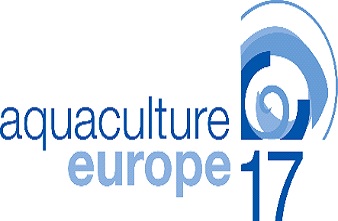Aquaculture Europe takes the theme of “Co-operation for Growth” for its 2017 edition in Dubrovnik, Croatia
Published: April 5, 2017
By: http://www.aquaeas.eu/eas-magazine/36-news/news/363-ae2017
 After the considerable and widely reported success of its 40th anniversary-year Aquaculture Europe 2016 event in Edinburgh, the European Aquaculture Society is moving forward on the organization of the AE2017 event to be held in Dubrovnik, Croatia from October 17 to 20, this year.
After the considerable and widely reported success of its 40th anniversary-year Aquaculture Europe 2016 event in Edinburgh, the European Aquaculture Society is moving forward on the organization of the AE2017 event to be held in Dubrovnik, Croatia from October 17 to 20, this year.One of the factors that may contribute to the lack of growth in the aquaculture sector is the lack of cooperation between operators in the sector. This may be regarding production (breeding programs, feed resources, benchmarking technical performance), promotion and market intelligence or training and knowledge management, including open access publications. Turning policy into growth can be achieved through diminishing competitive forces through common actions using regional cooperation, task forces, public/private partnerships and other initiatives that help to reduce conflicts.
AE2017 will address these aspects through the thematic sessions of AE2017 – and these will be further explored through the parallel and poster sessions of the conference and in the international trade show and Industry Forums. In its first planning meetings, the AE2017 Programme co-chairs Snjezana Zrncic (Croatian Veterinary Institute) and Constantinos Mylonas (HCMR, Greece) proposed a list of parallel sessions and these are now available for online abstract submission. These cover many sessions that feature in all AE events, as well as some that are specific to AE2017.
Abstracts should be submitted before May 1st to have a ‘first review’ chance by the session moderators for acceptance. Abstracts submitted after the deadline will still be processed, although the Industry Forums are currently being developed, and this will include the EAS-EATiP Day, and Forums covering developments in bluefin tuna and in European flat oysters, for example.
Most people think of Croatian aquaculture being based on sea bass and sea bream. With its long and beautiful coastline, this is indeed true and these species make up about two-thirds of the total marine production of 12,000 tons in 2015. But more than 2,500 tons of Atlantic bluefin tuna, small volumes of dentex, meagre and turbot and 800 tons of shellfish (Mediterranean mussels and European flat oysters) were also produced last year. The freshwater farming segment primarily produces common carp and rainbow trout, representing over 50% and about 30%, respectively, of the total fresh water production of 4,800 tons. Small volumes of silver carp, bighead carp, catfish, tench, pike, and zander are also farmed.
Space at the AE2017 international trade exhibition is still available, and both standard and corner booths are available. Each booth is 6m2 (2x3m) and features walls, carpet, two chairs and one table, spotlights, one power outlet, fascia identification sign and two free passes for the conference.
Source
http://www.aquaeas.eu/eas-magazine/36-news/news/363-ae2017Related topics:
Recommend
Comment
Share

Would you like to discuss another topic? Create a new post to engage with experts in the community.



